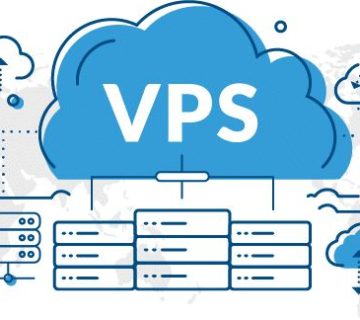Introduction
In exploring the world of e-learning, it’s essential to delve into its roots. The Evolution of E-Learning Platforms is a captivating tale of transformation. Initially, e-learning was a mere concept, a vision awaiting realization. It all started with the spark of an idea, a vision to impart knowledge using technology.
Back in the day, traditional education dominated, but innovators envisioned a future where learning could transcend the classroom. Slowly, technology caught up with these aspirations. It was the birth of e-learning. Early forms were rudimentary, resembling an online library. However, the foundation was laid, and progress was inevitable. The potential was recognized, prompting technological advancements. The path to sophisticated e-learning platforms had begun.
As the digital landscape evolved, so did e-learning. The growth has been exceptional, akin to a seed sprouting into a towering tree. Today, e-learning is a pivotal part of education, revolutionizing how we learn. This journey through time, from conception to today’s advanced platforms, showcases the remarkable evolution of e-learning. It’s a testament to human ingenuity and our unyielding quest for knowledge.
The evolution of E-Learning Platforms
Early Beginnings and Conceptualization
Early Beginnings and Conceptualization marked the genesis. Visionaries were seeing a new realm of learning, exploring the uncharted territories of the digital landscape.
- Inception and Ideation of Online Learning was the spark that ignited a revolution. Imagine the brainstorming sessions and visionary meetings where the concept of online learning was shaped.
- Early Technological Advancements and Adoption were crucial milestones. The birth of the internet and the initial forays into digital education paved the way for what was to come.
Pioneers harnessed the available technology, pioneering the first e-learning platforms. These were humble beginnings, but they set the stage for the technological marvels we witness today.
Transitioning from mere ideas to tangible platforms, e-learning began its ascent. The adoption of these early platforms showcased the thirst for knowledge that the digital age was beginning to quench.
This phase laid the foundation for the future. It was an era of experimentation and learning, not just for students but also for those shaping the future of education. The journey had begun, and it was destined for unprecedented heights.
The Internet Revolution and Proliferation of E-Learning
The advent of the internet signified a monumental shift in education and paved the way for the proliferation of e-learning. Let’s explore this transformative phase.
- Transitioning to Web-Based Learning was a seismic shift. It was a radical transformation, like turning a new page in the book of education. The internet, a relatively new entity, acted as a catalyst, reshaping how education was perceived and imparted. Suddenly, learners had a vast virtual classroom at their fingertips. E-learning was no longer confined to physical boundaries.
- The Rise of Learning Management Systems (LMS) was the cornerstone of this revolution. Imagine it as the engine propelling the e-learning locomotive forward. Learning Management Systems emerged as a cohesive platform, managing, delivering, and tracking online courses. They became the hub where learners and educators seamlessly interacted. It was a paradigm shift in the management and delivery of educational content.
The internet revolution democratized education, making it accessible to a broader audience. E-learning transcended barriers, democratizing knowledge and empowering individuals to learn at their own pace. This phase laid the foundation for the modern e-learning landscape we are familiar with today.
The Modern Era: Integration, Interactivity, and Personalization
Welcome to the modern era of e-learning, a world teeming with innovation and learner-centric approaches. Let’s navigate this dynamic period.
- Multi-Platform Accessibility and Mobile Learning has reshaped the learning landscape. It’s akin to a revolution, breaking the shackles of traditional learning constraints. The surge of smartphones and tablets brought education to our palms, enabling learning on the go. The term ‘anytime, anywhere learning’ took on a literal meaning. Mobile learning became a cornerstone of the modern e-learning ecosystem. It was a liberating experience, allowing learners to access knowledge wherever they were. The impact was profound and far-reaching.
- Interactive Content and Gamification brought fun into learning. It was like infusing a breath of fresh air into the educational realm. Imagine learning becoming a captivating adventure. Interactive content and gamification achieved precisely that. Suddenly, learning was no longer a passive experience. It was immersive, engaging, and immensely enjoyable.
Gamification turned learning into a game, making the learning journey exciting and interactive. It was about challenges, rewards, and the thrill of accomplishment. This modern era opened doors to a new dimension of e-learning. It placed the learner at the centre, providing a tailored and engaging experience. The integration of technology into education was a game-changer, revolutionizing how we perceive and pursue knowledge.
Future Trends and Innovations in E-Learning
The future of e-learning is an exciting frontier, brimming with advancements. Let’s explore what lies ahead.
- AI and Machine Learning in E-Learning is a game-changer. It’s like having a personal tutor always available. AI analyses learning patterns and tailors content accordingly. It’s like having a mentor who understands you and guides you through your learning journey.
- Virtual Reality (VR) and Augmented Reality (AR) Integration is the future of immersive learning. It’s learning with a virtual touch. Imagine being in a virtual laboratory, conducting experiments without the physical setup. That’s the power of VR and AR in e-learning.
These innovations are poised to revolutionize e-learning. They’re like windows into a future where education is personalized, engaging, and immensely effective. The potential they hold is tremendous.
The future trends in e-learning are driven by a commitment to enhance learning experiences. They promise to make education more accessible, interactive, and effective. It’s an exciting evolution, and we’re fortunate to witness and be a part of it. The future is bright for e-learning, and the journey ahead is bound to be nothing short of extraordinary.
Conclusion
As we conclude this exploration, let’s reminisce about the past and gaze into the future of e-learning platforms. The journey of e-learning platforms has been nothing short of remarkable. From humble beginnings to the transformative present, it’s been a dynamic evolution. Through the years, e-learning platforms have transcended barriers. They’ve adapted, embracing technological advancements. It’s akin to a relentless quest for knowledge empowerment.
Looking ahead, the path of e-learning platforms seems incredibly promising. The future is vibrant, driven by cutting-edge innovations. The dynamics of e-learning platforms mirror a continuous cycle of growth. It’s like a river, always flowing, shaping landscapes as it progresses. In the grand scheme, e-learning platforms have become a vital tool for education. It’s like a compass guiding us in the vast sea of knowledge.
In conclusion, e-learning platforms have come a long way, and the best is yet to come. The journey has been fascinating, and the future holds even more exciting promises. Here’s to the dynamic trajectory of e-learning platforms, propelling us towards a future where learning knows no bounds.



